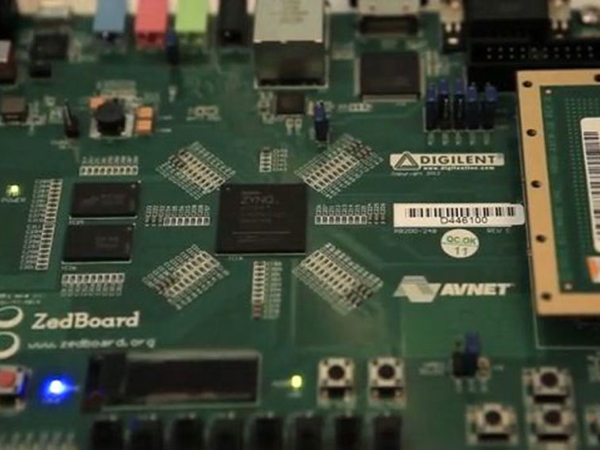 Humans
Humans  Humans
Humans  Animals
Animals 10 Species That Refused to Go Extinct
 Weird Stuff
Weird Stuff 10 Weird Things People Used to Do at New Year’s
 Our World
Our World 10 Archaeological Discoveries of 2025 That Refined History
 Weird Stuff
Weird Stuff 10 Fascinating Facts You Might Not Know About Snow
 Miscellaneous
Miscellaneous Top 10 Things Crypto Was Supposed to Change & What Actually Did
 History
History 10 Huge Historical Events That Happened on Christmas Eve
 Music
Music 10 Surprising Origin Stories of Your Favorite Holiday Songs
 History
History 10 Less Than Jolly Events That Occurred on December 25
 Weird Stuff
Weird Stuff 10 Funny Ways That Researchers Overthink Christmas
 Humans
Humans 10 Unsung Figures Behind Some of History’s Most Famous Journeys
 Animals
Animals 10 Species That Refused to Go Extinct
 Weird Stuff
Weird Stuff 10 Weird Things People Used to Do at New Year’s
Who's Behind Listverse?

Jamie Frater
Head Editor
Jamie founded Listverse due to an insatiable desire to share fascinating, obscure, and bizarre facts. He has been a guest speaker on numerous national radio and television stations and is a five time published author.
More About Us Our World
Our World 10 Archaeological Discoveries of 2025 That Refined History
 Weird Stuff
Weird Stuff 10 Fascinating Facts You Might Not Know About Snow
 Miscellaneous
Miscellaneous Top 10 Things Crypto Was Supposed to Change & What Actually Did
 History
History 10 Huge Historical Events That Happened on Christmas Eve
 Music
Music 10 Surprising Origin Stories of Your Favorite Holiday Songs
 History
History 10 Less Than Jolly Events That Occurred on December 25
 Weird Stuff
Weird Stuff 10 Funny Ways That Researchers Overthink Christmas
10 Modern Devices That Will Change Our Lives
Many believe that we are now experiencing the most intense technological revolution of all time, and that we are transitioning into a High Technology Age, where new advancements will make previous models extinct. Here are some gadgets that are slated to be released in the very near future (some have been released already). Many of these modern devices will change our lives—and the world we live in—for good:

Fear of the dentist can be a very serious issue for many children and adolescents. According to academic researches into Dental Fear and Anxiety, some young people hate dentist visits so much that they often refuse to co-operate, or worse—they don’t even go to the dentist.
The truth is that no one really enjoys going to the dentist regardless of their age, even if it’s just for a plain check-up. Scientists at Princeton and Tufts have been working a thin tooth sensor that may limit the amount of times we will need to get our teeth checked—hence, less visits to the dentist, and a happier population.
The sensor will alert you when it detects any bacteria that could cause cavities, plaque buildup, or any other infections—in this way you’ll be able to prevent a major problem, and thereby avoid the dentist’s office.

Welcome to the future of fun and entertainment. Developed by Bollinger & Mabillard, Wing Coasters are a type of roller coaster that places the passenger on the sides of the track, giving them the illusion that they’re riding on the wing of a plane. There’s nothing below or above them. There are currently four in the world: three of them are in the US, and a fifth is planned to open in China sometime during 2013.
It’s not recommended for people who are afraid of high rises, nor for those of us who have a propensity to vomit. Some things simply don’t go together, no matter how advanced the technology might be.

Some call it a revolution in gaming—and not unfairly so. Oculus Rift is a virtual reality headset, which has the potential of changing the gaming industry for ever.
Gamers already benefit from the great design and graphical capacities of current console and PC games, but Oculus Rift might be the device that finally brings players right into the middle of the action. We can only imagine how this new technology will be incorporated into the games we already know so well. What will multiplayer will be like, perhaps a decade or two from now?

Parallella is going to change the way that computers are made, and Adapteva offers everyone the chance to participate in this revolution. Simply put, it’s a supercomputer for the average person.
Real-time object tracking, holographic heads-up display, and speech recognition will all become even smarter and more effective thanks to Parallella. Considering that it’s essentially a mini supercomputer, the price is incredible, at only $99. It’s not recommended for the non-programmer and non-Linux user, but if you do have the know-how, the kit is loaded with development software to create your own personal projects.

The tendency of replacing classical television with digital television has been going on for a while, but the 4K TVs will probably be the final hit for this old industry. The 4K terminals can display movies with resolutions four times bigger than HDTV, so it is understood why they’re so appreciated.
For the moment, the price is prohibitive, and the current capabilities of televisions would not be able to ensure a solid number of programs that can be enjoyed on this device—but all the same, it is a huge step forward in terms of clarity and fidelity. How long before a 4K TV becomes a realistic purchase? Some might tell you that it’s a matter of weeks. You can already buy 4K televisions with Soni’s 55 and 65 inch models coming in at $5,000 and its 84 inch going for the tidy sum of 24 thousand. And it is already supported on Youtube. Here is a beautiful 4K video of ink drops (note: switch quality to “original” for the 4k version).

“Pebble” officially launched in 2013, is the first smart watch. Besides the common functions of a classic watch, it can be connected to the Smartphone or tablet, with a simple Android or iOS application. This way, the watch will give you access to lots of information besides the time of day, such as missed calls, messages, and emails. The device is connected with an app store also, so the developers could create other applications that would make Pebble even more interesting and useful.

It seems like advertising, nowadays, is as necessary as clean water for society to function. So it’s refreshing to see one company working hard to combine the two. Located in Lima, Peru, and developed by The University of Engineering and Technology of Peru and ad agency Mayo DraftFCB, the billboard is able to produce around twenty-six gallons of water per day. It uses five filtration devices, and is helped along by Lima’s extremely humid air.
The billboard is designed not only to provide water to Peru’s largest city—a city where 1.2 million residents don’t have running water—but also to encourage kids to apply to UTEC and study engineering. This could be one of the biggest technological revolutions ever, which will solve one of humanity’s biggest problems—or it could merely be an ambitious plan that won’t evolve to the next level. Only time will tell.

People have tried to make smart glasses before, with very little luck. Google’s “Glass” seems like the first pair that might actually work properly. Not only that—people who have used them said that (despite the uncanny feeling that everyone’s staring at you), the experience was actually pretty good. Being able to get real-time information about everything you’re looking at may seem to some like information overload, but it’s likely that most people will become used to the idea the future.

Dubbed the next generation of gesture control, the Myo is an armband full of sensors that are able to pick up on the electrical activity in your muscles, in order to wirelessly control your electronics via Bluetooth. According to the creators, the device will work with both Windows and Mac OS, with iOS and Android support soon to follow. The Myo can already be preordered for $149, and is expected to ship in late 2013.
Its success may well depend on the number of applications it will work with. It’s a safe bet that your average gamer is the most eager to see the gaming abilities showcased with this device. One way or another, the Myo gesture control armband, if successful, will consign camera-based gesture-recognition to the history books.

Developed by Second Sight, the Argus II is a device that works to restore vision to those suffering from complete or partial blindness. It does this by capturing images via a mini video camera in the glasses, which are then transformed into instructions that are picked up by an implant placed on the wearer’s eye.
Once the implant has received the instructions, it sends them to an electrode array which then forwards the visual information to the brain via the optic nerve. This is a true revolution of technology, which offers the chance of restored sight to millions of disabled people around the world.
Theodoros II is a budding author and a law graduate. He loves History, Sci-Fi culture, European politics, and exploring the worlds of hidden knowledge. His ideal trip in an ideal world would be to the lost city of Atlantis.








